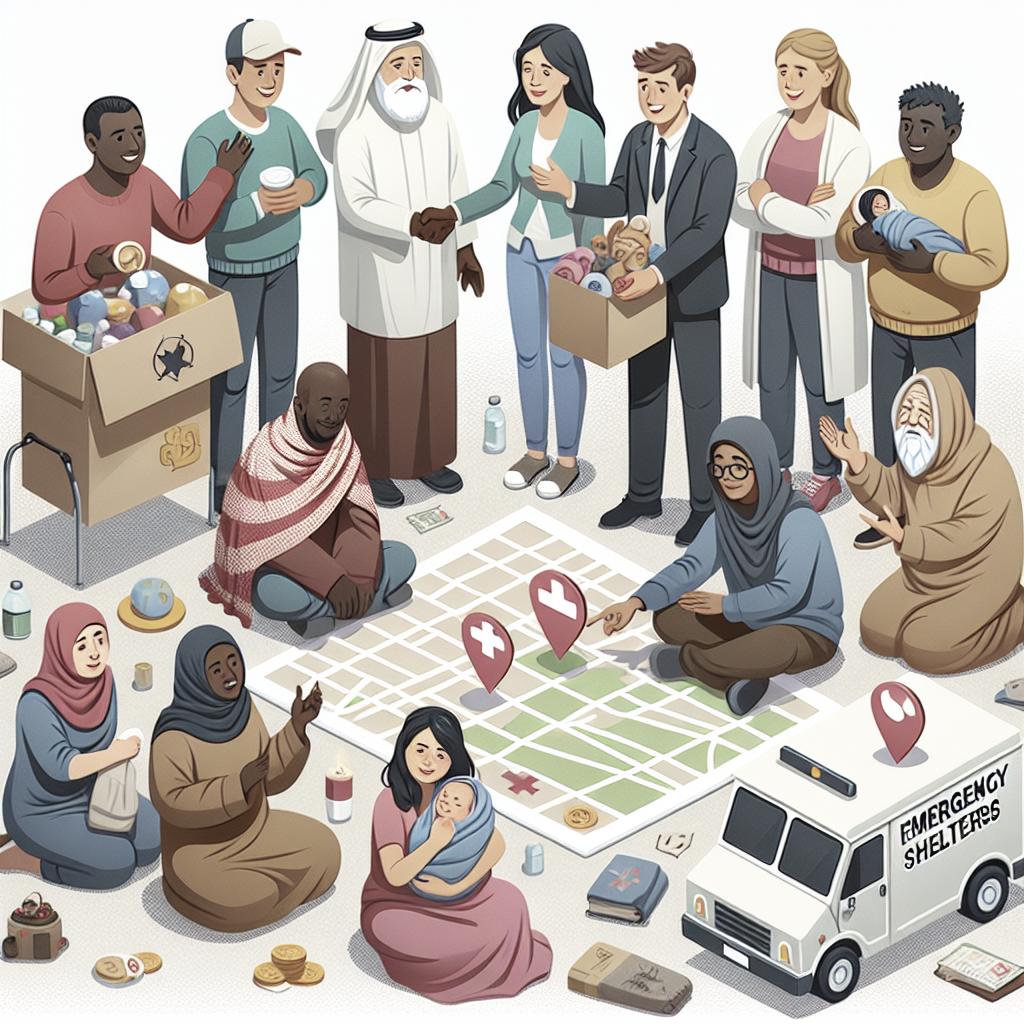How to Find Emergency Shelters for the Homeless
In contemporary societies, homelessness remains a poignant issue, affecting countless individuals in dire need of stability and safety. Access to emergency shelters can be a critical lifeline for the homeless, providing them with a temporary refuge and essential services. This blog post aims to guide readers through the various aspects of finding and understanding emergency shelters. We will explore the different types of shelters available, the eligibility criteria typically required, and the wide range of services they offer. By delving into what one can expect upon arrival, examining shelter guidelines, and providing practical tips for locating a shelter, this comprehensive guide intends to offer a nuanced understanding of the vital role shelters play in supporting homeless individuals. Our goal is to equip readers with the knowledge and resources they need to assist either themselves or others in crisis situations.
Types of Shelters
Emergency shelters tend to vary widely in their scope, design, and operational framework. The most common types include day shelters, night shelters, and seasonal shelters. Day shelters cater to those who need a place to stay during the day, providing facilities for eating, resting, and accessing basic amenities. Night shelters focus on offering a secure place to stay overnight, sometimes requiring individuals to vacate during daylight hours. Seasonal shelters may operate exclusively during extreme weather conditions to accommodate the additional demand during summer heatwaves or harsh winter months. Beyond these general categories, specialized shelters exist to target specific populations, including family shelters, youth shelters, and women’s shelters. Family shelters are designed to keep units intact, offering private spaces or family rooms. Youth shelters specifically cater to runaway and homeless youth, providing tailored support to navigate their unique challenges. Women’s shelters offer refuge to women facing domestic abuse or violence, offering additional safety measures and supportive services. Each type of shelter strives to provide targeted care and accommodations corresponding to the varied needs of the homeless population.
Shelter Eligibility
Understanding eligibility criteria is crucial when attempting to access emergency shelters. Most shelters have defined criteria in place to manage the capacity and maintain a safe environment for all residents. Generally, eligibility involves verifying homelessness through self-declaration or referral, and in some cases, proof of residence within a specific geographic area may be required. Other factors, such as age or familial status, may play a role in determining eligibility, particularly for specialized shelters catering to families, youth, or women. Certain shelters may impose additional conditions, such as sobriety requirements or participation in mandatory programs as part of their support framework. Similarly, background checks may be required to ensure the safety and security of all residents and staff. Understanding these prerequisites in advance can help streamline the intake process and reduce the chances of being turned away unexpectedly. It is important to inquire about specific eligibility criteria for each shelter, as the requirements can vary significantly depending on the operational mission and resources.
Services that are Provided at Shelters
Basic Services
Emergency shelters primarily focus on providing basic services that meet the immediate needs of residents. These services typically include safe sleeping arrangements, access to clean restrooms and shower facilities, and basic meals. Hygiene products such as toiletries and clean clothing may also be provided to ensure residents can maintain personal cleanliness during their stay. These fundamental services are designed to afford a dignified level of comfort and to meet the essential human needs for rest, nutrition, and hygiene. Communication support is another invaluable basic service, with shelters often providing access to phones or internet resources that allow residents to maintain connections with loved ones or contact potential employers. Furthermore, health screenings and basic medical services may be available on-site or through partnerships with local healthcare providers, ensuring that minor medical issues are addressed, and residents can manage chronic conditions more effectively.
Additional Services
Some shelters extend their services beyond basic necessities by offering a variety of additional support services aimed at empowering residents and promoting long-term stability. These might include educational programs, job training, and employment assistance services that help individuals secure stable employment and gain valuable skills. Life skills workshops focusing on budgeting, cooking, or communication skills equip residents with the tools they need in their day-to-day lives. Counseling and mental health services provide significant benefits, addressing the psychological and emotional needs of residents in a supportive environment. For shelters assisting specific populations, such as families, specialized programs may be available to support children’s education and development or to deliver legal assistance for navigating social services or resolving family-related issues. By providing these additional services, shelters play a crucial role in helping participants regain their independence and rebuild their lives.
What to Expect at a Shelter
Arriving at an emergency shelter can be an emotional and overwhelming experience for many individuals. Understanding what one can expect upon arrival can help in alleviating some of the anxieties. The intake process generally involves completing administrative paperwork and potential interviews to confirm eligibility and ascertain immediate needs. Personal belongings may be subject to search for safety reasons, and residents are often assigned a bed or sleeping space. As part of the rules and guidelines shared during orientation, residents may be introduced to curfew policies, meal times, and shared responsibilities like cleaning or maintaining communal spaces. Residents can expect to be treated with respect and dignity by staff members, who are available to offer guidance and support when needed. Developing an understanding of daily routines and respecting both resident and shelter rules can greatly enhance the overall shelter experience. Shelter life is often communal, requiring residents to engage with diverse individuals from various backgrounds and circumstances. Maintaining open communication and building supportive relationships with staff and fellow residents fosters a sense of community and can facilitate a smoother transition into this temporary living arrangement. While communal living may have its challenges, it can also offer valuable opportunities for companionship and mutual support during a difficult time.
Shelter Guidelines
To maintain a safe and orderly environment, shelters establish guidelines and house rules that residents must follow. These guidelines often include maintaining sobriety, respecting curfews, and adhering to designated meal and rest times to ensure a functional and comfortable living space for all. Respect for fellow residents, staff, and facility property is emphasized, with expectations set for appropriate conduct in shared spaces. Shelters often have a zero-tolerance policy for violence, theft, or any form of abuse, with violations potentially resulting in immediate expulsion. Communication and cooperation with shelter staff are key to successfully navigating shelter life, and individuals are encouraged to partake in communal activities and responsibilities, fostering community spirit and accountability. Understanding these guidelines in advance can help prevent any potential conflicts and ensure a positive experience for all shelter occupants. It is essential to maintain clear communication with shelter personnel, who are often readily available to address questions or provide clarification regarding any aspect of shelter life.
Find a Shelter
Locating an emergency shelter can seem like a daunting task, especially in unfamiliar settings. However, several resources are available to assist individuals in finding suitable arrangements. Online resources, such as national databases or local shelter directories, offer comprehensive listings, contact information, and details on available services for shelters across various regions. These platforms often have filtering options that allow users to focus on specialized shelters catering to specific demographics. Local organizations, such as social services or government agencies, can be instrumental in helping individuals access shelters. These agencies may provide referrals or direct entry into shelters and can also offer guidance on additional services and benefits available to homeless individuals. Hotlines and emergency service providers often have up-to-date information and can offer personalized assistance in guiding individuals to appropriate shelters based on availability and specific needs. Outreach initiatives, including community centers and religious organizations, may also connect individuals with shelter resources. Many of these groups work closely with shelters and can provide referrals and direct support in accessing needed services. By utilizing these networks and reaching out to community support systems, individuals can more effectively and efficiently find shelter and begin the journey toward regaining stability and independence.
Lessons Learned
“`html
| Sections | Key Points |
|---|---|
| Types of Shelters | – Day, night, and seasonal shelters are common types. – Specialized shelters exist for families, youth, and women. |
| Shelter Eligibility | – Eligibility often requires proof of homelessness and sometimes other criteria. – Specialized shelters may have additional eligibility requirements. |
| Services Provided at Shelters | – Basic services include sleeping arrangements, meals, hygiene facilities. – Additional services may include job training, life skills workshops, counseling. |
| What to Expect at a Shelter | – Intake process includes paperwork and potentially interviews. – Shelters offer communal living with guidelines and support. |
| Shelter Guidelines | – Rules often include curfews, sobriety, and respect for communal space. – Violations of rules can lead to expulsion. |
| Find a Shelter | – Online databases, local agencies, and hotlines are useful resources. – Community organizations and outreach initiatives can provide guidance. |
“` In summary, emergency shelters are an indispensable resource within our communities, providing immediate relief and fundamental support services to individuals in critical need. Understanding the dynamics of different shelter types, eligibility criteria, and available services can immensely help those seeking refuge. Additionally, knowing what to expect at a shelter, the importance of adhering to shelter guidelines, and methods to locate these facilities empowers individuals to make informed decisions and navigate the shelter system effectively. By embracing available resources and community support channels, we can better assist those experiencing homelessness in regaining stability and fostering long-term growth and independence.


